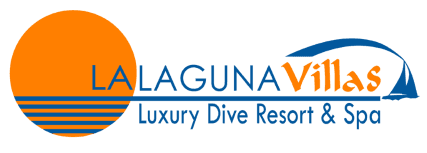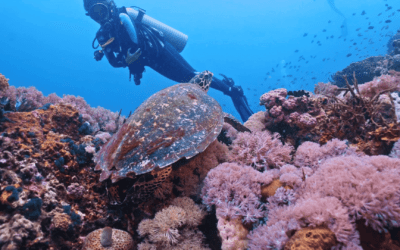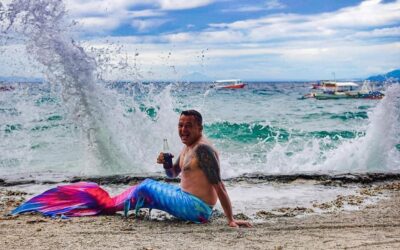Behind the scenes: the compressor room
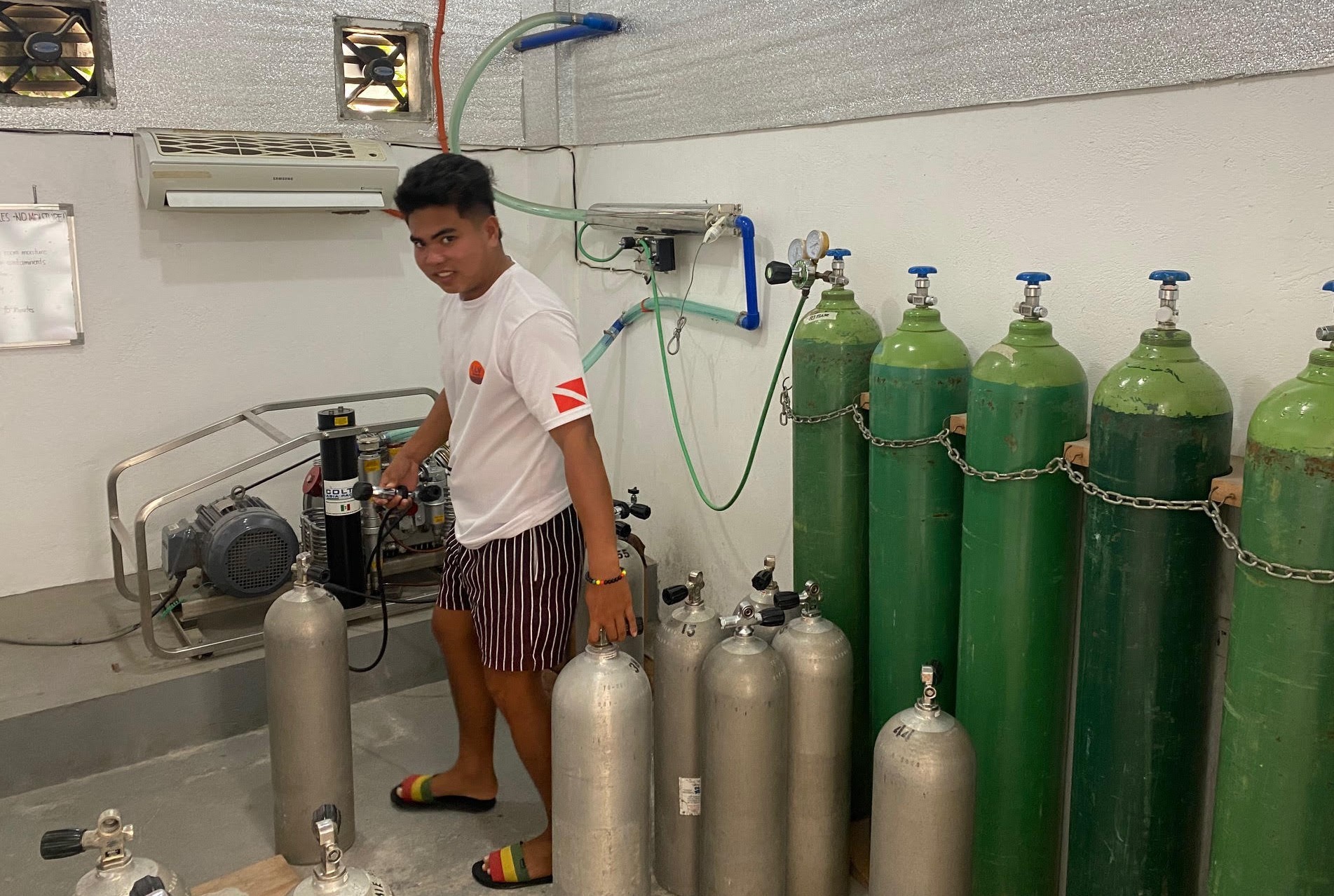
Some things just happen – as if by magic.
When we flick a light switch, our room is illuminated. We don’t consider the sweat of the coal miners or the risks of those working on oil rigs, we don’t marvel at the design of the power plant, we don’t wonder how cables are strung between electricity pylons by people whose jobs leave them dangling in mid-air. We don’t even think about the technological marvel which is a modern light bulb. It just happens.
Well, in a well-run dive shop in a resort like Lalaguna Villas in Puerto Galera (and we believe we are the very best-run dive shop in town) one of the things which “just happens” is that there are always scuba cylinders brimming full of compressed air, or expertly mixed Nitrox enhanced air. But how?
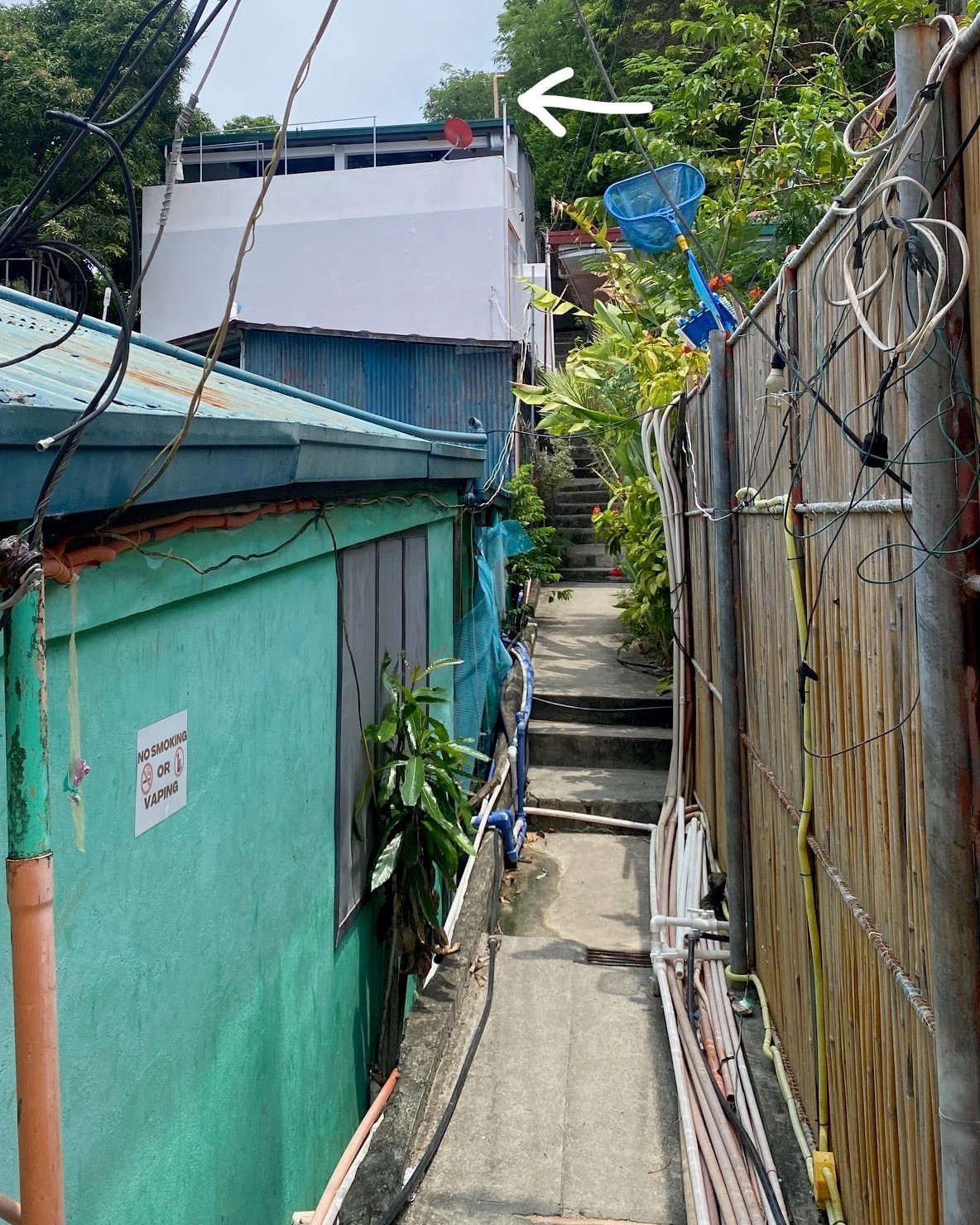
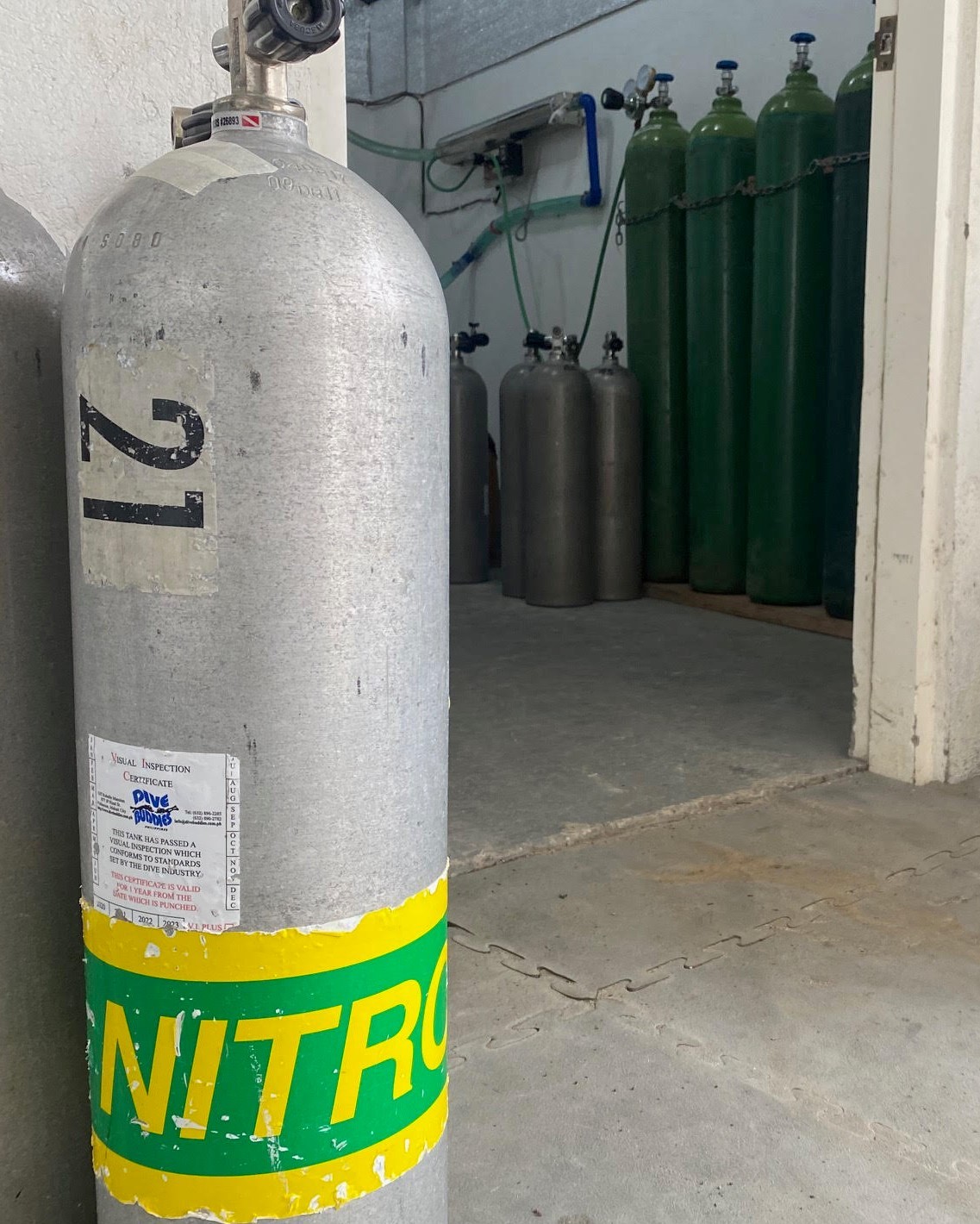
The journey begins almost fifty feet in the air, where our air intake pipe juts about above the rooftops, ensuring we are sucking in the very cleanest tropical air.
Powerful motors bring the air down to our compressor room, located out the back of the resort, where members of our dive team are hard at work filling cylinders with either air or, depending on our guests’ needs, Nitrox enhanced air with a higher percentage of oxygen.
Once a cylinder is secured to the compressor, three different sets of pistons increase the pressure steadily to the point where it can be driven into the cylinder.
We fill to a maximum pressure of up to 230 bar, because the air is heated by the pressurisation and will cool before use, and decrease in temperature – and therefore pressure – as it cools. And we always want to ensure our customers start their scuba dive with at least 200 bar of pressure in their tanks to give them plenty of bottom time.
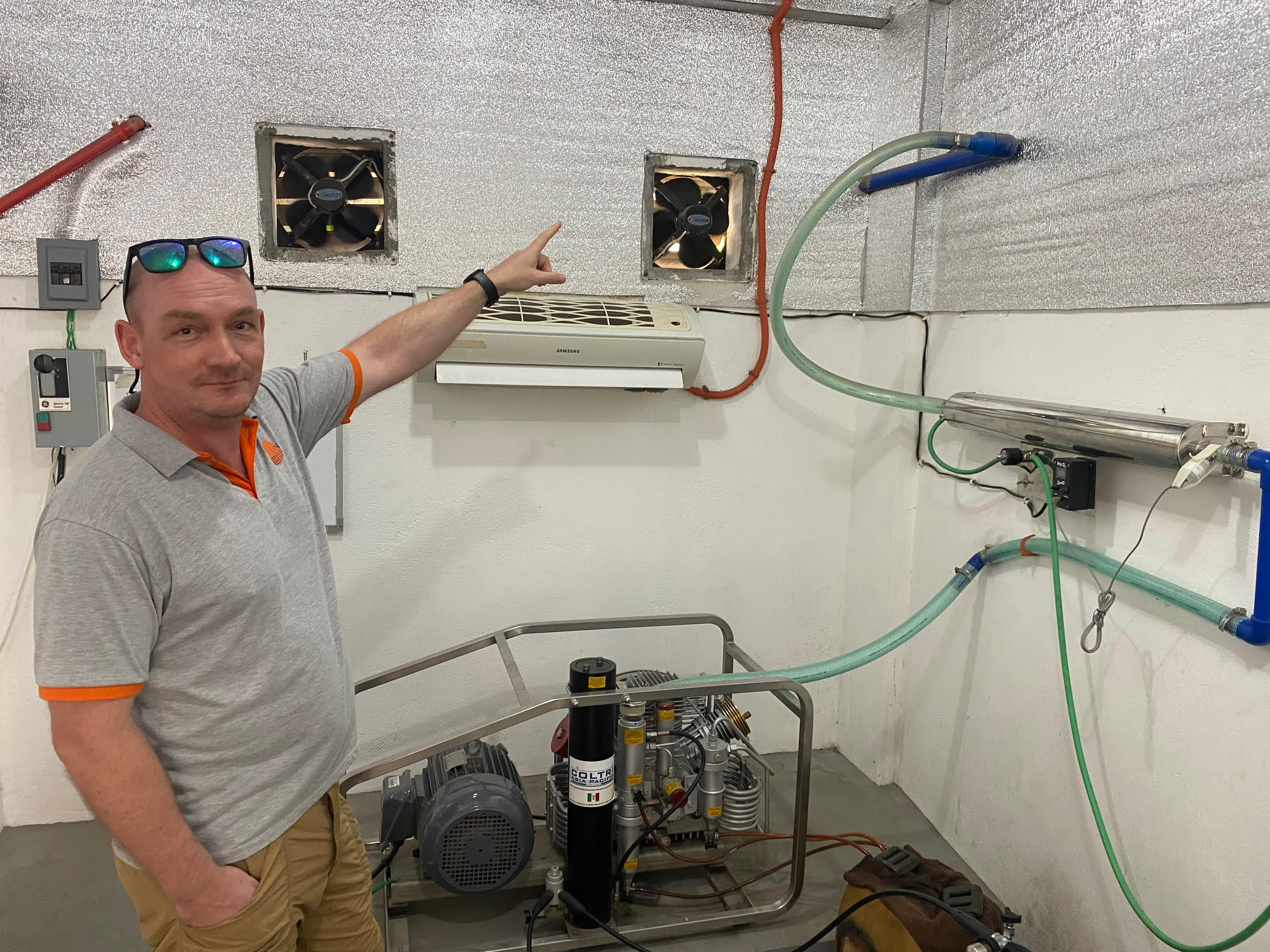
Moisture from the humid air as well as impurities and oil are extracted by a dense filtration system which is monitored and replaced regularly throughout the day so our guests never get a bad batch or stale-smelling air.
To create Nitrox, additional oxygen is added from massive canisters of medical oxygen which we purchase locally. Extreme care – and special training – is required when dealing with pure oxygen since it is so highly flammable.
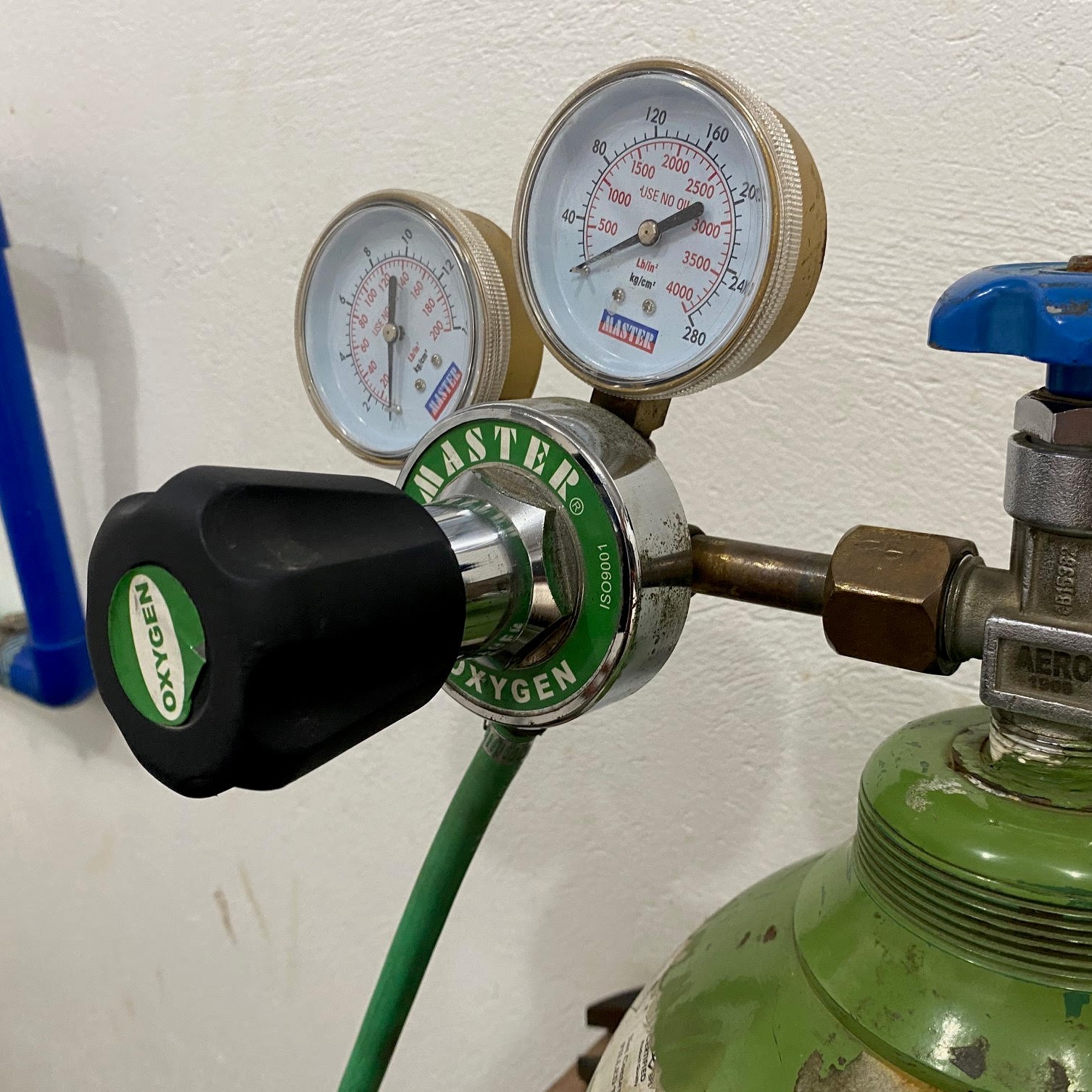

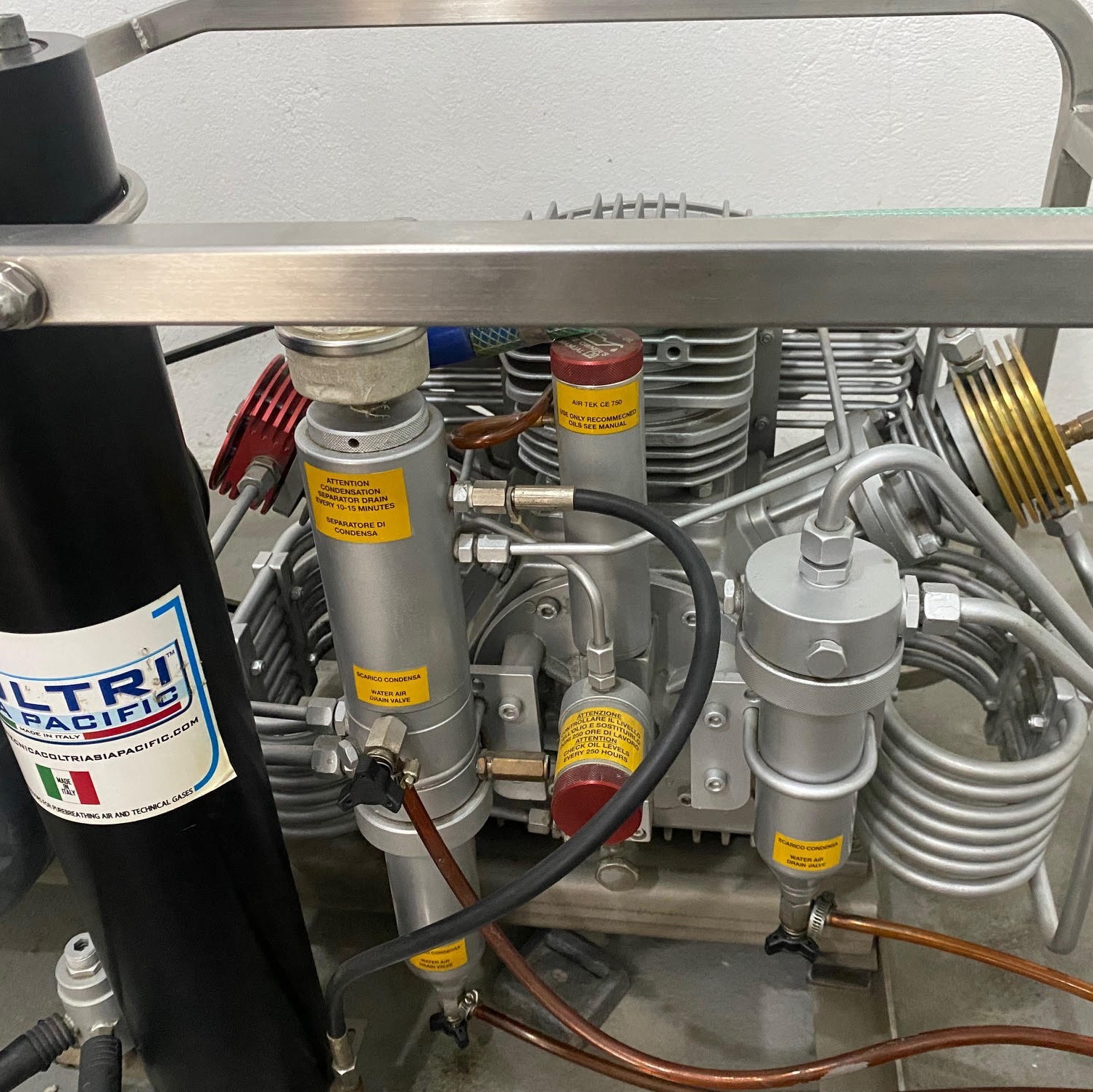
Oxygen enters the mixer and an O2 analyzer feeds back to our technicians the percentage of oxygen in the mixture. We control the inflow of O2 to hit the 32% oxygen mark for standard Nitrox, which gives additional bottom time at deeper depths. (Nitrox dive courses are also available from our PADI professional instructors).
And once the tanks are filled and cooled, our team hoist them onto their shoulders and bring them down the passageway to the dive shop.
So when you’ve finished your first dive of the day and want to swap your tank ready to go out again, and you look in the corner of the shop to see if there are any… yes, there are always spare full tanks of air and Nitrox.
It just happens – as if by magic.
